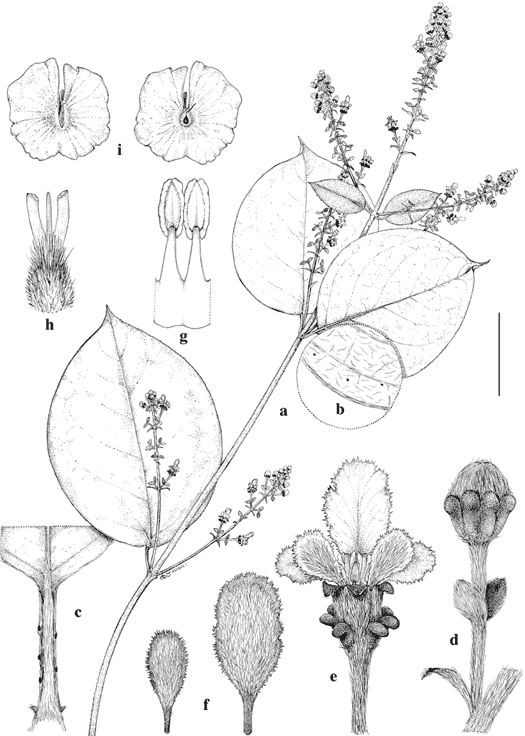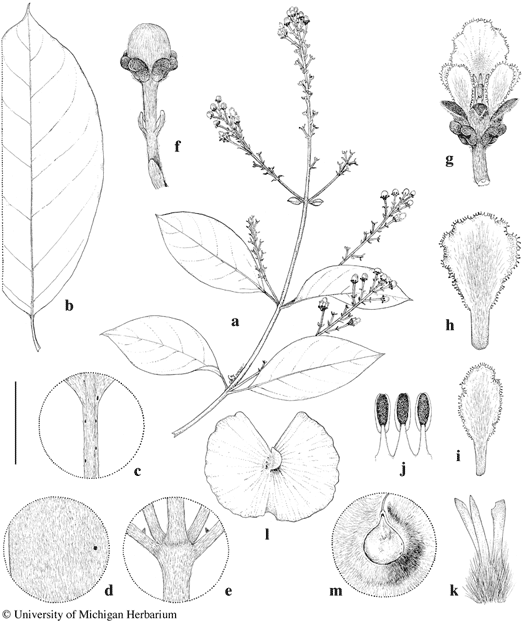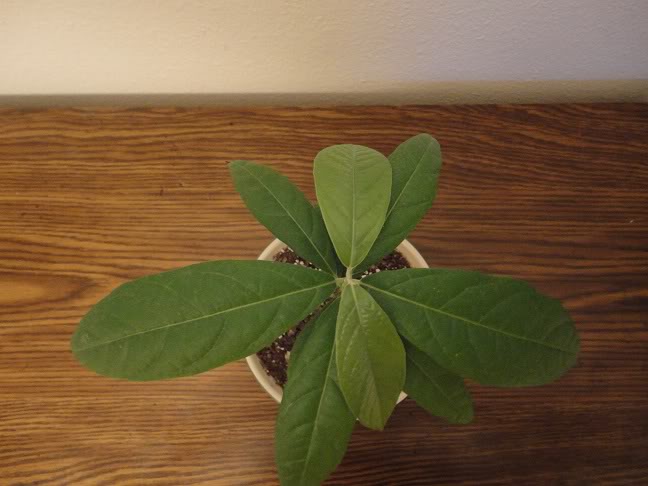
Alicia anisopetala and the genus Alicia
The genus Alicia is part of the same family as other ayahuasca vines (Malpighiaceae). At present, there are only two species recognized as belonging to this genus: A. anisopetala and A. macrodisca. Both were formerly considered to be members of the genus Mascagnia, which was essentially a catch-all genus that included anything that didn't fit nicely into the other related genera (Triopterys, Tetrapterys, Hiraea, etc.). It's unsurprising that when modern genetic analysis was applied, Mascagnia was shown to be polyphyletic, and several of its members were split into new genera. Details on this split can be found in Anderson 2006.
Nomenclature
Alicia anisopetala (A. Jussieu in A. St.-Hilaire) W.R. Anderson.
=Hiraea anisopetala A.Juss.
=Mascagnia anisopetala (A. Juss.) Griseb.
=Hiraea macrocarpa Chodat
=Mascagnia nobilis C.V. Morton
Alicia macrodisca (Triana & Planchon) W.R. Anderson
=Mascagnia macrodisca (Triana & Planch) Nied.
=Mascagnia anisopetala var. macrodisca (Triana & Planch.) Kosterm.
=Hiraea macrodisca Triana & Planch
Chemistry
There are no reports in the literature of anyone studying the chemistry of A. anisopetala or A. macrodisca. This obviously makes it difficult to find a starting point in identifying the unknown peaks from Endlessness' GCMS data. The next step is to consider the chemistry of closely-related species to see if they contain the same (or structurally related) compounds.
Closely-related species
At present, the best-resolved phylogenetic tree containing A. anisopetala (under the synonym Mascagnia anisopetala) comes from Davis et al. 2002. The most closely related species surveyed in that paper were Callaeum septentrionale and Mascagnia bracteosa [=Malpighiodes bracteosa]; the data supports placing these three generea (Alicia, Callaeum, and Malpighiodes) in a single clade.
This close relation to the genus Callaeum initially seems promising. Callaeum antifebrile is used in folk medicine as a febrifuge and seems to be associated with B. caapi. I've seen several claims that it is used as a hallucinogen (e.g. Johnson 1986), but these claims all seem to refer to a 1943 report which says no such thing ("Both plants [B. caapi and C. antifebrile] are used in popular medicine and sorcery, but I do not know if the species I am now describing has any narcotic propriety"; Ducke 1943). It is known by common names including bejuco de las calenturas (fever vine), agahuasca, ayahuasca negro, shillinto (a Peruvian term for ayahuasca), shillinto blanco, and shillinto negro (Johnson 1986). But as promising as this sounds as a lead for identifying the unknown peaks, it may be a dead end; C. antifebrile has been found to contain harmine (Schultes 1982), and this is likely responsible for its activity as a febrifuge. For anyone interested in digging through the literature on this plant (what I've presented here is only touching the surface [edit: see post #141]), the following is a list of botanical synonyms you may encounter:
Callaeum antifebrile (Ruiz ex Grisebach) D.M. Johnson
[=Banisteria antifebrilis Ruiz ex Griseb.]
[=Cabi paraensis Ducke]
[=Mascagnia psilophylla var. antifebrilis (Griseb.) Nied.]
[=Mascagnia psilophylla f. peruviana Nied.]
The genus Malpighiodes is another that was split from Mascagnia in 2006. It contains four species: M. bracteosa, M. guianensis, M. leucanthele, and M. liesneri. I haven't yet searched the literature for these names (or their botanical synonyms) to see if any chemical analysis or ethnomedicinal uses have been reported. I would encourage anyone with the spare time to do so.
References
Anderson, W.R. 2006. Eight Segregates from the Neotropical Genus Mascagnia (Malpighiaceae). Novon 16(2): 168-204.
Davis, C.C., C.D. Bell, S. Mathews, and M.J. Donoghue. 2002. Laurasian migration explains Gondwanan disjunctions: Evidence from Malpighiaceae. PNAS 99(10): 6833–6837.
Ducke, A. 1943. O cabí do Pará. Arquivos do Servicio Forestal 2(1): 13-17.
Johnson, D.M. 1986. Revision of the neotropical genus Callaeum (Malpighiaceae). Systematic Botany 11(2): 335-353.
Schultes, R.E. 1982. The beta-carboline Hallucinogens of South America. Journal of Psychoactive Drugs 14(3): 205-220.
Alicia macrodisca



